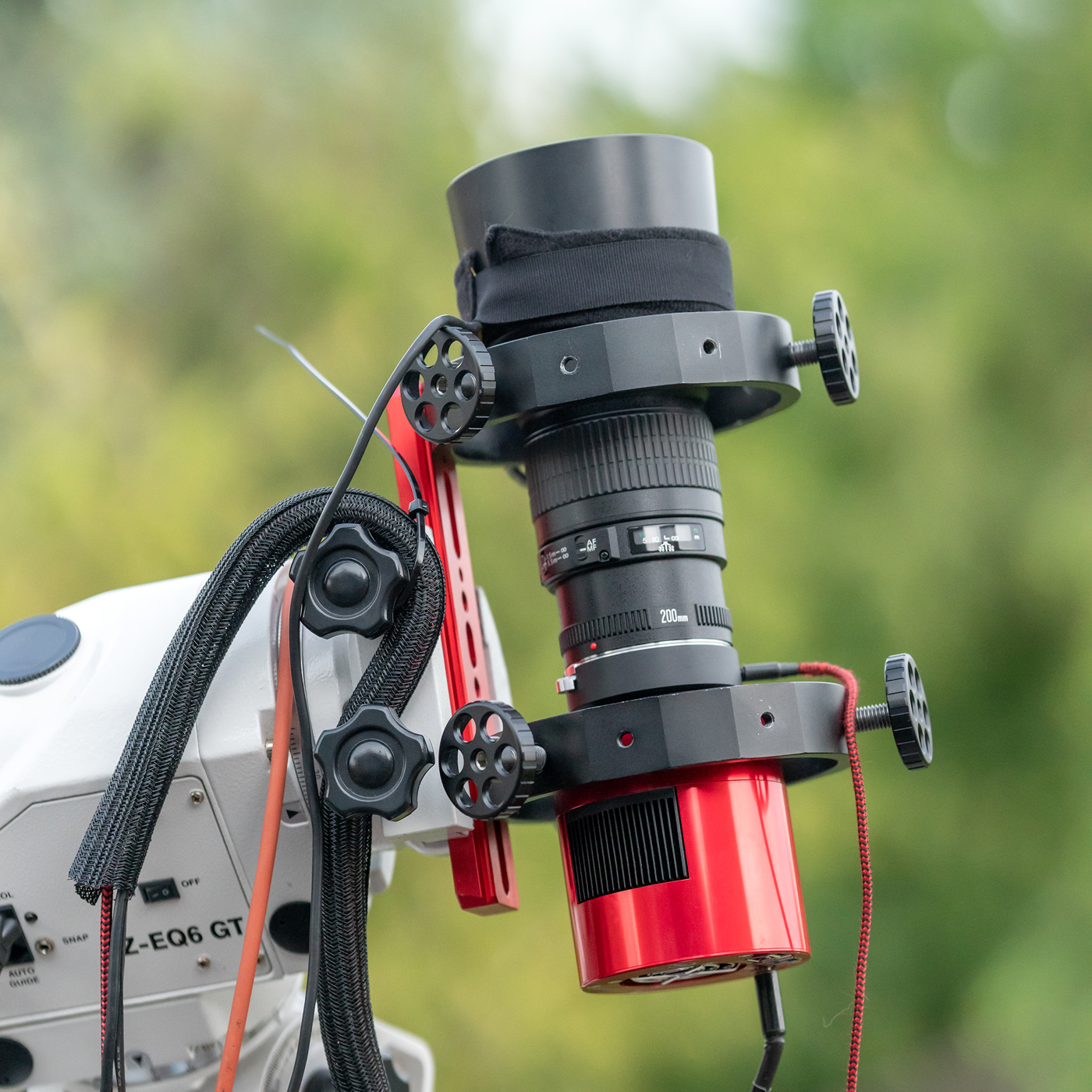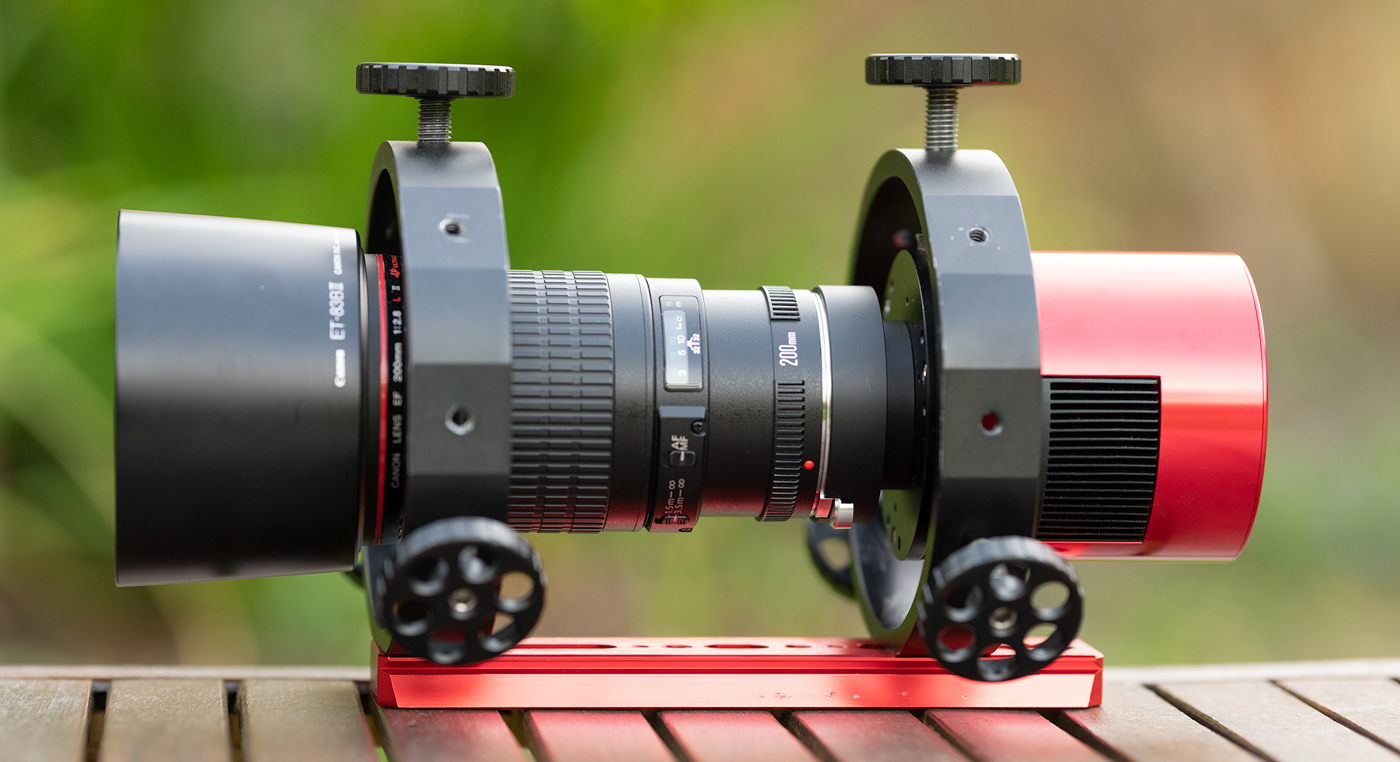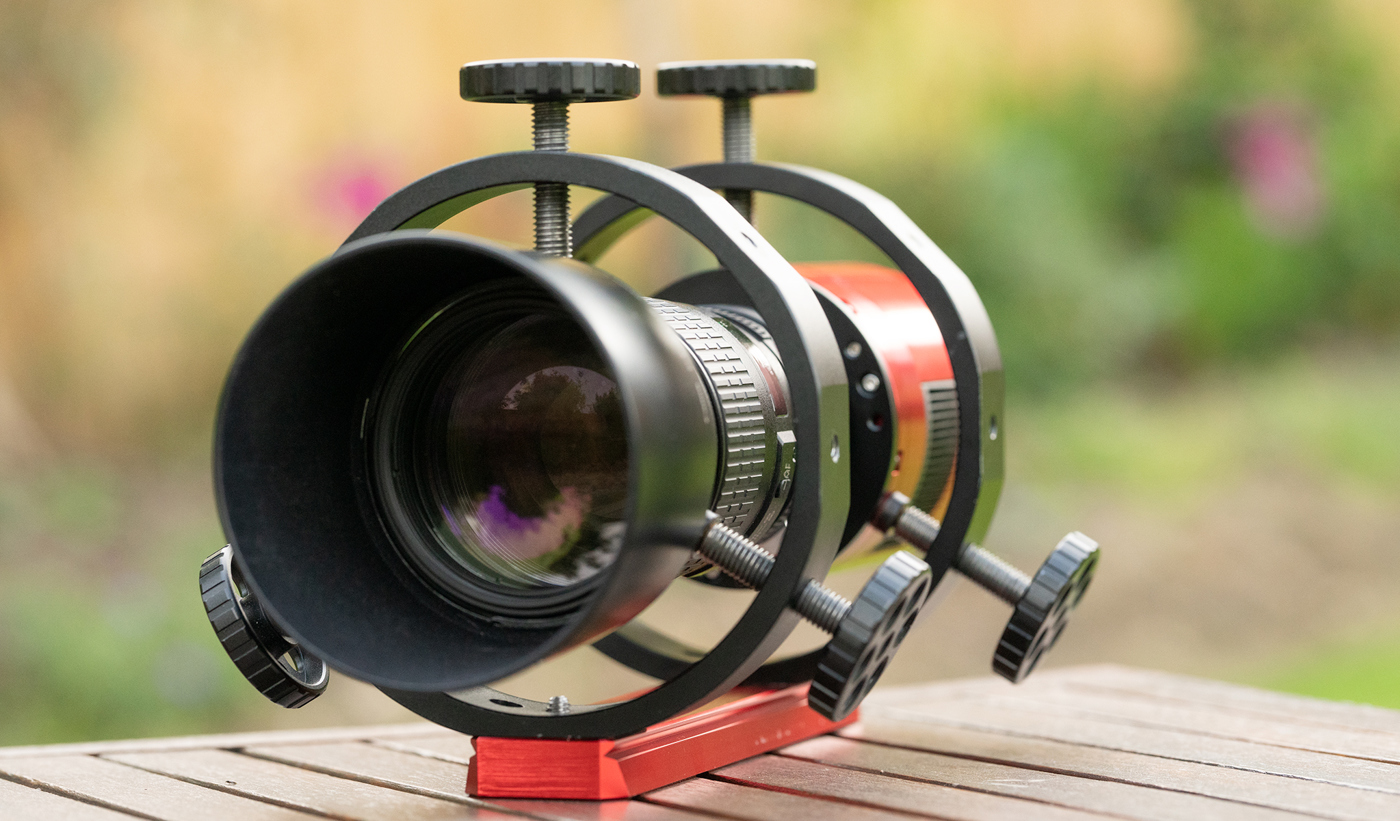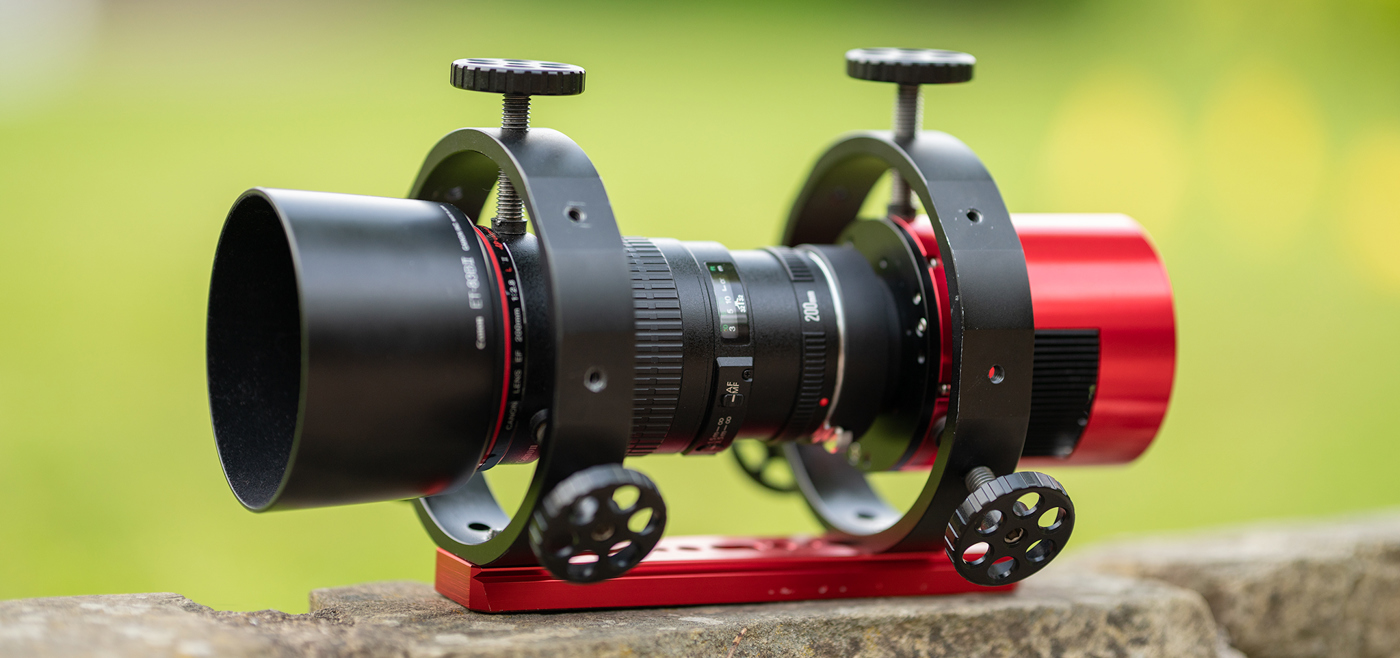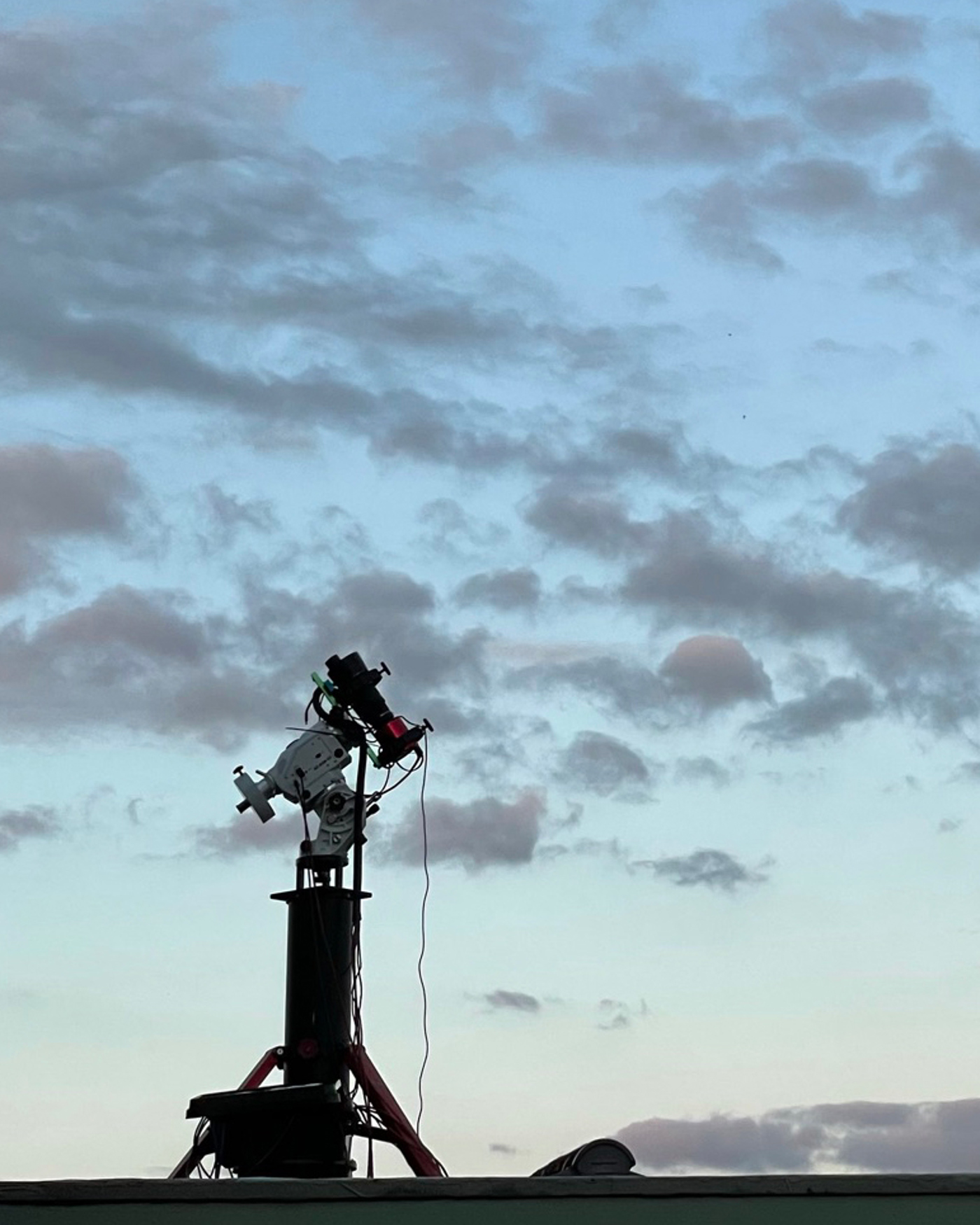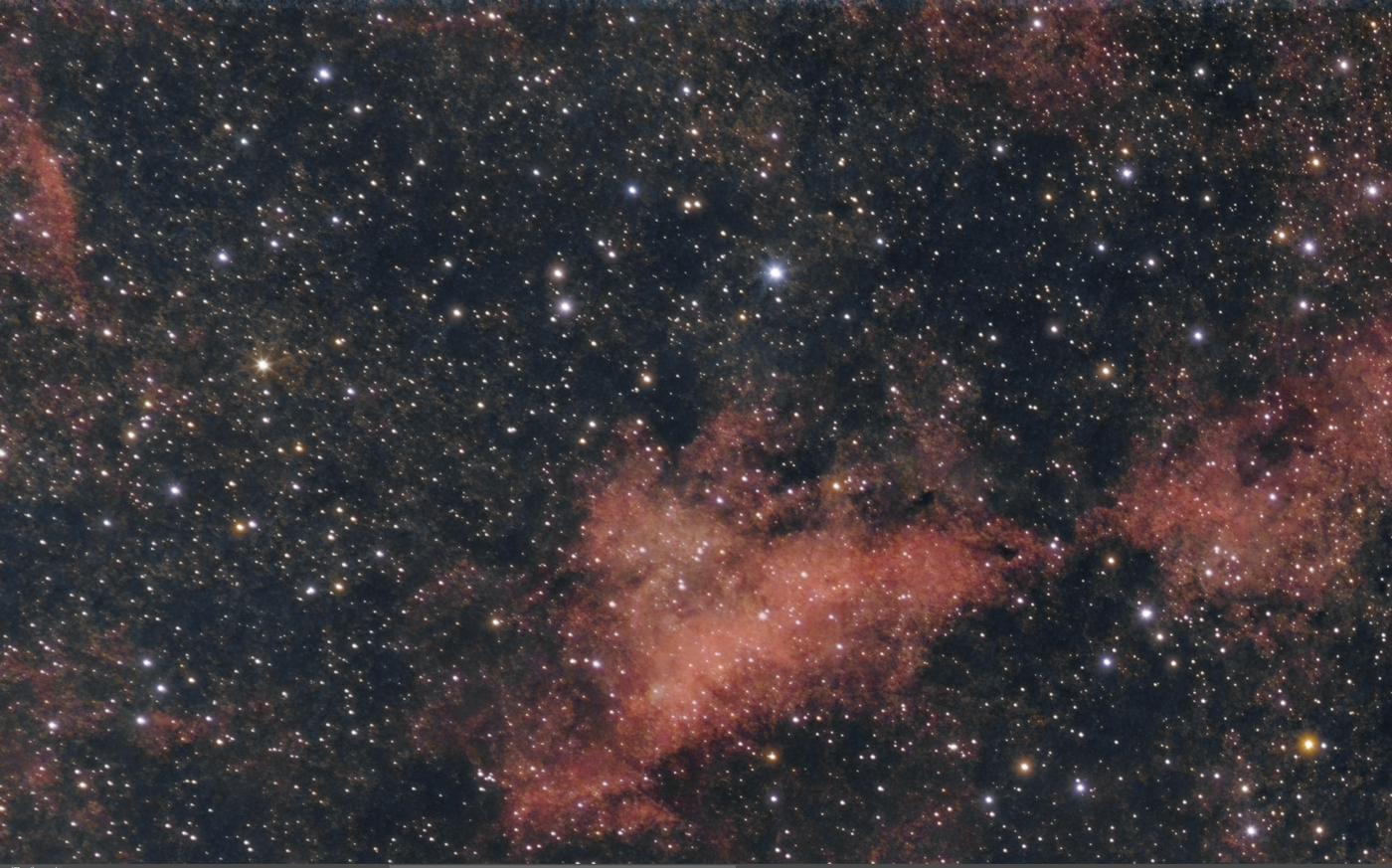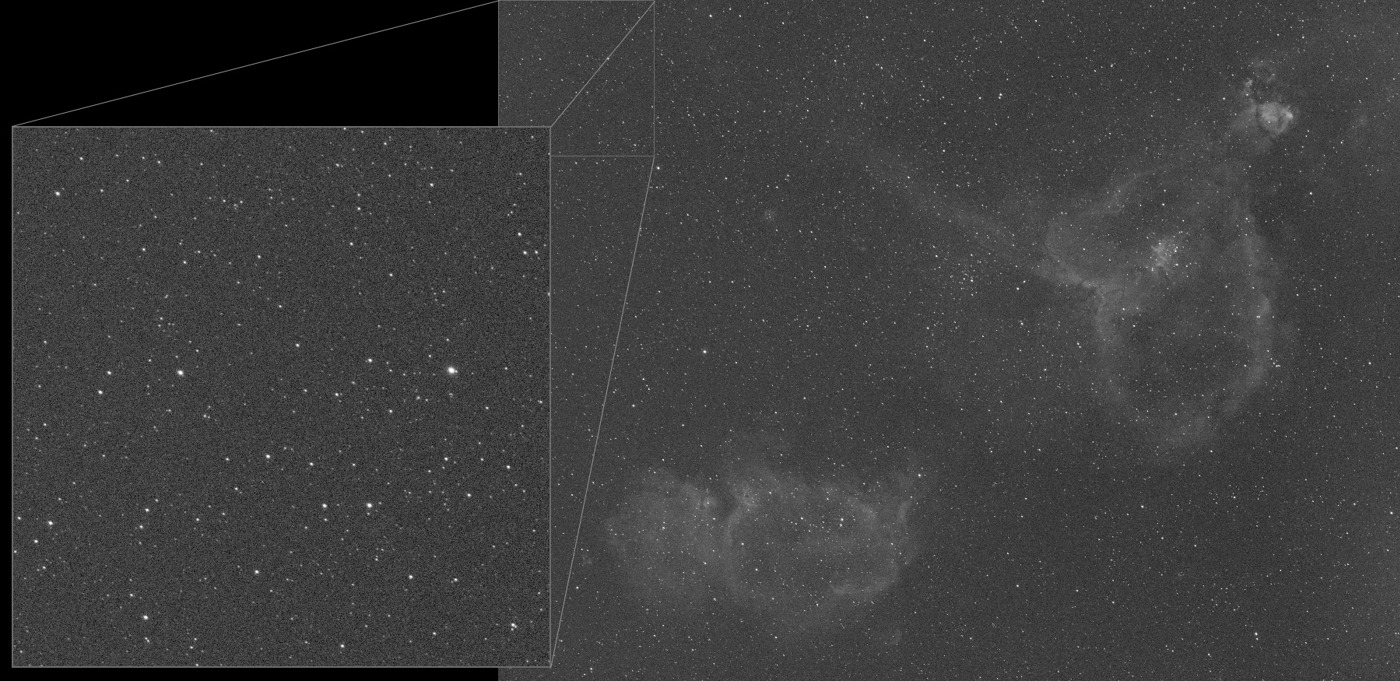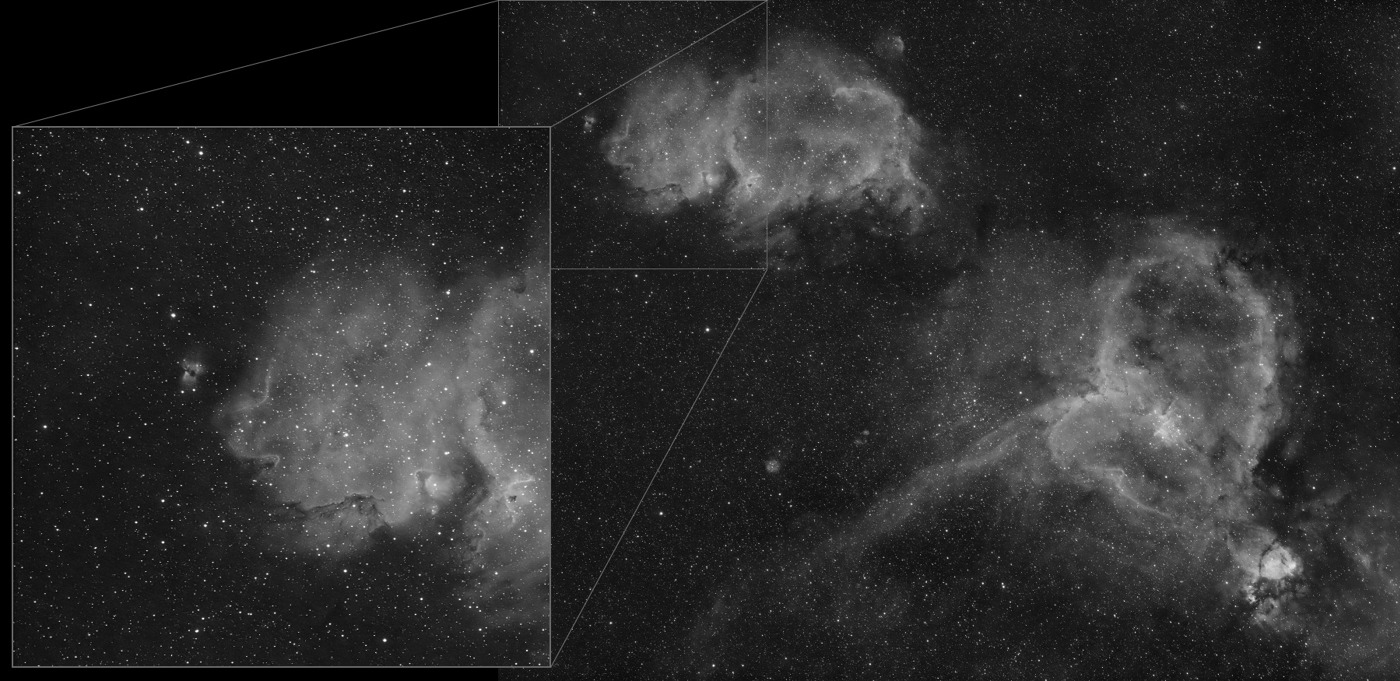The Canon 200mm 2.8 II L lens is a popular and reasonably affordable fast telephoto lens - but is it any good for astrophotography?
At the end of 2019 I was looking for a widefield lens for astrophotography. A reasonably priced and almost mint second hand copy of the Canon 200mm 2.8 lens cropped up so I bought it with the aim of using purely for astrophotography with a cooled CMOS camera.
This was the second copy of the lens I have owned. I originally bought the lens new in 2004 but eventually traded it for a Canon 50mm 1.2 as I was mostly doing portraits at the time.
The first problem I encountered was how to attach my ZWO 1600MM Pro to the lens. Initially I tried a ZWO EOS adapter that I bought a few years previously but it gave rather disappointing results. I could not get good stars presumably due to the lens not being parallel to the sensor or perhaps the spacing not being quite right. In the end I gave up with the idea of using it with a cooled CMOS camera and started using it with my full frame Canon 6D. Matched with a full frame body the lens provided excellent results and is a great portable setup.
Eventually ZWO brought out a new EOS adapter with 2" filter draw. This adaptor proved a game changer for the lens. The connection to the camera was rock solid and star shapes much better.
My best results came from stopping the front aperture down to f/4 with filter step down rings. Doing this avoids the diffraction pattern on bright stars caused by the lens iris having a non-circular shape. However if you don't mind the diffraction pattern this is not needed.
To stop the lens down for use with a ZWO adapter (or any other astro-adapter) simply attach the lens to a Canon EOS camera body. Set the desired aperture, press and hold down the depth of field button and whilst the depth of field button is pressed detach the lens from the camera body. This will keep the lens stopped down to the desired aperture after removal from the camera.
The biggest drawback I have found with the lens is focussing as it requires very fine adjustments to get it spot on. This can be quite a time consuming process so I started looking for an autofocusing solution.
Eventually I managed to source an Astromechanics ASCOM APS-C M42 to Canon Lens Controller. Like the ZWO filter draw adapter this worked really well with the lens. The connection is not quite as solid as the ZWO adaptor but I solved this by holding the lens and camera in a pair of Baader guide scope rings. The fine control of focus makes the lens much easier and far more consistent to work with.
It is also possible to use the Astromechanics adapter with a filter wheel. To my surprise I found I could use the lens at f/3.5 even with small 1.25" filters. The narrowband HA/OIII image of the Crescent Nebula in Cygnus is take with this combination.

Conclusion
Overall I highly recommend this lens for widefield astrophotography. It is reasonably priced and readily available second hand. It also serves as a fantastic fast telephoto lens for everyday photography.
For broadband imaging I'd suggest using f/4 but for narrowband, especially HA, you can certainly get away with f/3.2 which makes for a very fast widefield astrophotography setup.
For the best star shapes smaller sensors are an advantage, I really like this lens paired with my 1600MM Pro 4/3” sensor. Example of corner star shapes with a larger 24mp APS-C sensor below.
Make sure you get a good quality adaptor to eliminate any tilt in the system and I highly recommend mounting the setup in guide scope rings.
Alternatives?
The Samyang 135mm f/2 is extremely popular for astrophotography. I've never used it but there are many examples of superb images taken with it. Just make sure you get a good copy as I suspect the quality control is not as good as the Canon. Price is similar to a used copy of the Canon lens.
The William Optics RedCat has a similar focal length but is slightly slower at f/4.9. Being designed specifically for astrophotography this would be a great alternative but at twice the cost.
The Canon 70-200mm 2.8 II is considered to be even better than the 200 2.8 prime but is much more expensive. If you want a little more reach the Canon 300mm f/4 would also be one to look at.
It took a while to put together the right setup to get the most out of the lens but I'm now extremely happy with the performance of my Canon 200mm 2.8.



